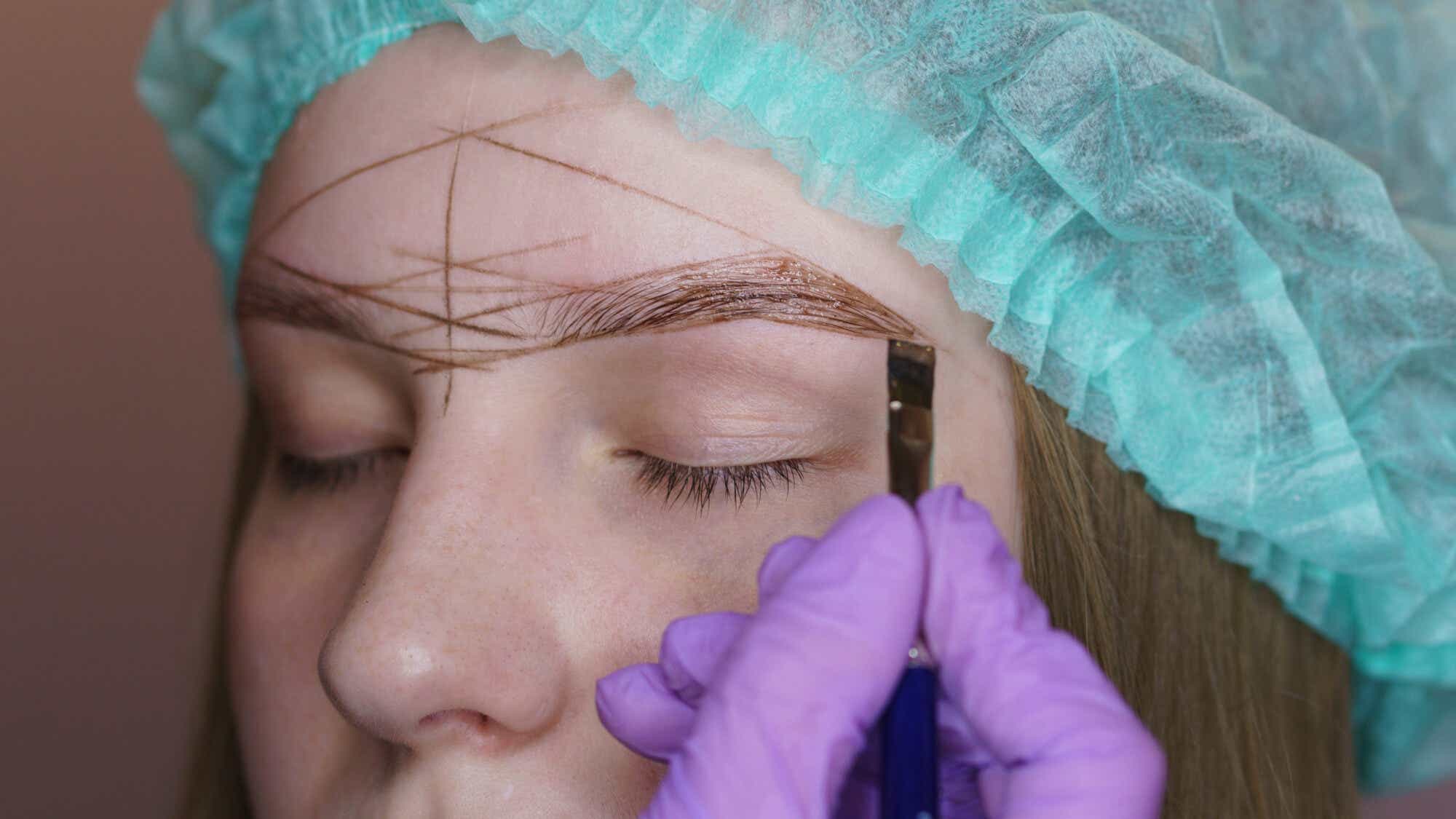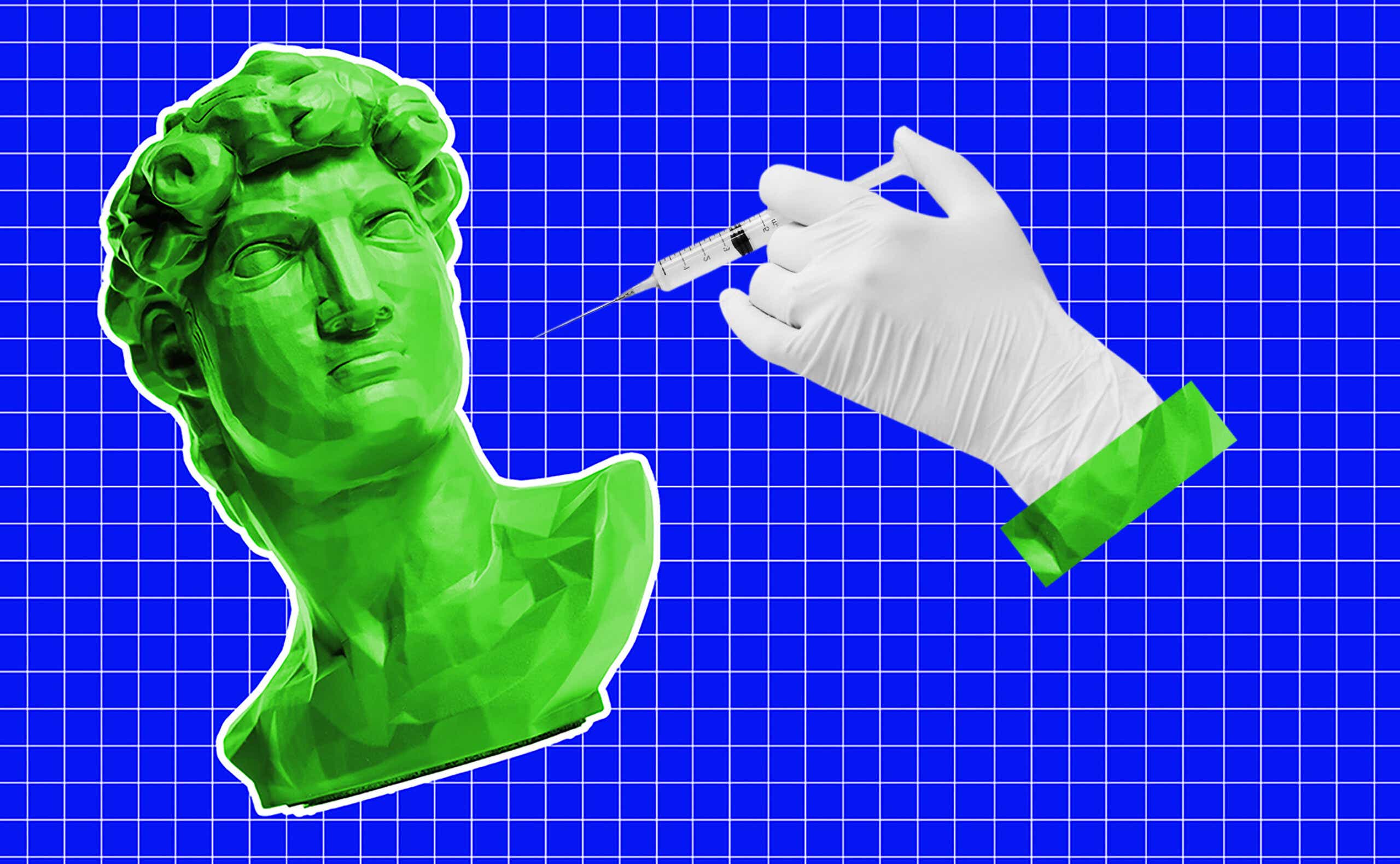There’s a procedure for just about everything.
If you’re seeing more celebrities and everyday people making “tweaks” to their appearance — and being open about what they’ve had done — lately, you’re not alone. Plastic surgery has become much more normalized since the days when only the rich and famous could, or would, get cosmetic procedures. Plenty of Instagram influencers celebrate their surgeries online, even taking footage of themselves getting bandages removed.
All this modern-day technology, and access to injections, lasers, and high-priced doctors can be a bit of a double-edged sword. (Or should we say knife?) On the one hand, people should be able to do what they want to their bodies and faces without facing judgment. On the other hand, normalizing cosmetic procedures does little to challenge harmful beauty standards, and arguably serves to uphold unrealistic ideals.
More importantly, it seems like there are increasingly obscure and odd procedures cropping up to help us “fix” our perceived flaws. Think of any dissatisfaction with your body or face that’s crossed your mind, and there’s probably a way to address it. Here are the latest forms of bodily modification, some of which might be too extreme for even the most adventurous celeb.
Buccal Fat Removal

We’ve talked before about this procedure — in which people get the buccal fat pads in their cheeks removed. The result is a slimmer face, with more defined cheekbones and jawline; it’s done by making an incision inside the cheek, so there are no scars on the face. The downside is that volume loss in the face already happens with aging, so some people regret taking out their fat as they get older — and even elect to have it put back in.
Dimpleplasty
We have no problem admitting that dimples are cute, but could you imagine wanting them so badly that you’d have a doctor cut a hole in your face? Believe it or not, some do, hence dimpleplasty. It’s actually a fairly straightforward procedure that’s usually done on an outpatient basis, sans anesthesia. The doctor makes a small incision in the skin, removing some muscle and fat, then ties a suture to two cheek muscles to keep the dimple in place. Recovery tends to be pretty short — about a few days — and complications include bleeding, facial nerve damage, redness and swelling, infection, and scarring.
Umbilicoplasty
Just when you thought you’d hit the limit on random things you could feel insecure about: Apparently, people are changing the appearance of their belly buttons. While umbilicoplasty was initially done on infants with umbilical hernias, adults who want to tweak the look of their belly buttons can now get it, too. Oftentimes, those who get the surgery do so after pregnancy or removing a belly button piercing — both of which can change the appearance of the belly button (and even change someone’s “innie” into an outie). Significant weight loss can also leave behind loose skin, which impacts how the belly button looks. Fortunately, the procedure itself is minimally invasive and takes about an hour.
Earlobe lift
We’ve heard of kids being bullied for having ears that stick out (aka Dumbo syndrome) but having lobe-related insecurity is a whole other ballgame. An earlobe lift involves the surgeon removing a small amount of tissue from the earlobe and then stitching it back together, so it’s more compact. According to a 2022 survey by the American Society of Plastic Surgeons, 33 percent of patients who got ear surgery, or otoplasty, were between the ages of 13-19, the largest percentage among the age groups studied. But some doctors note that earlobe lifts are more common among older adults, who might want to address sagging that happens with age (and heavy earrings).
Thigh lift
Is there no body part that surgeons can’t lift? This one is pretty self-explanatory: A surgeon creates an incision in the inner or outer thigh and removes excess skin. Some people who’ve lost significant amounts of weight consider this procedure to address the inevitable sagging skin.
Lip Lifts

The latest battleground on the face is the philtrum: The expanse of skin below the nose and right to the edge of the upper lip. A lip lift isn’t related to Botox or filler — it’s a totally different approach that’s more permanent than injectables. With a lip lift, a surgeon removes a small piece of skin between the nose and lips, shortening the philtrum and forcing the top lip to “roll” upward a bit, which gives the appearance of a fuller lip. There are different types of lip lifts, including a corner lift which — you guessed it — upturns the corners of the lip. Doctors can also achieve a similar effect to a lip flip using Botox or other neuromodulators, rather than surgery, but the effect is short-lived.
Eyelash transplants
So you want thick, full lashes, but applying a strip of falsies won’t cut it. And eyelash extensions aren’t permanent, but you wish they were. If so, you’re in luck, because surgery can offer you the long, voluminous look you’re hoping for. A surgeon can transplant your own hair (often from the back of your head) to your lash line, and, unlike extensions — which start falling out after about six to eight weeks — these results are forever.
Eyebrow Transplant

Many of us were victims of the early 2000s barely-there brow trend. If you, too, had to learn the hard way that brows don’t always grow back the same after many vigorous plucking sessions, there’s hope — in the form of an eyebrow transplant. A doctor will take hair follicles from the scalp, usually near the ears, to implant and fill in your brows. Unlike penciling-in brows with makeup, an eyebrow transplant is permanent, but there’s a caveat: Since the hair is sourced from your head, it’ll continue growing past where most brows do. This means that patients may need to trim their brows much more often after the procedure.
Foot Filler
You’ve heard of cheek and lip filler, but foot filler? It’s real — and in demand. Some get filler injected in the tops of their feet to combat the loss of volume that can happen with age. (If only there was a functional covering one could wear in public all the time that would hide your less-than-aesthetic feet from the world…) But it might relieve you to know that some people who get foot filler aren’t doing it because they’re insecure about how their feet look: Filler can also help relieve foot pain, particularly for people with plantar fasciitis and calluses. That’s because the filler can cushion areas that have become hardened or where fat pads that are supposed to help absorb shocks in the foot have shrunk over time.
Hand Filler
Hands can be one of the first places to show signs of aging, so just as people use injectables to decrease fine lines in the face, some are turning to dermal fillers to help turn back the clock on their mitts. Hand fillers (usually hyaluronic acid options like Restylane) can plump up the skin, particularly where there’s been fat or volume loss. The results are immediate and can last from 12 to 18 months. But while you might be able to bring your hands back to their former youthful glory, we can’t guarantee you’ll get carded the next time you’re buying wine.








